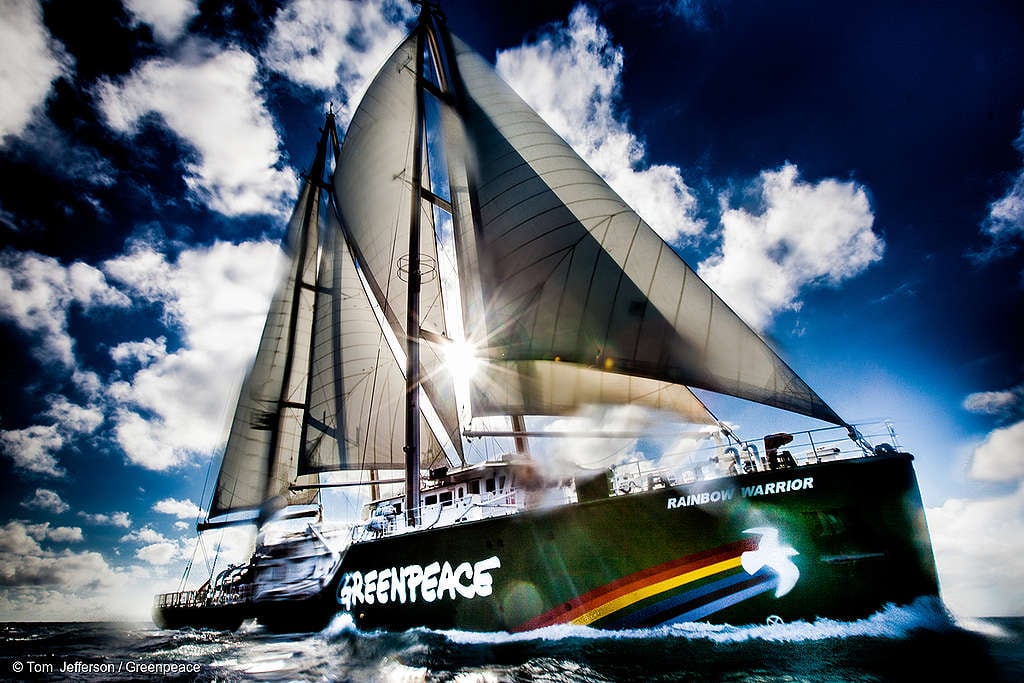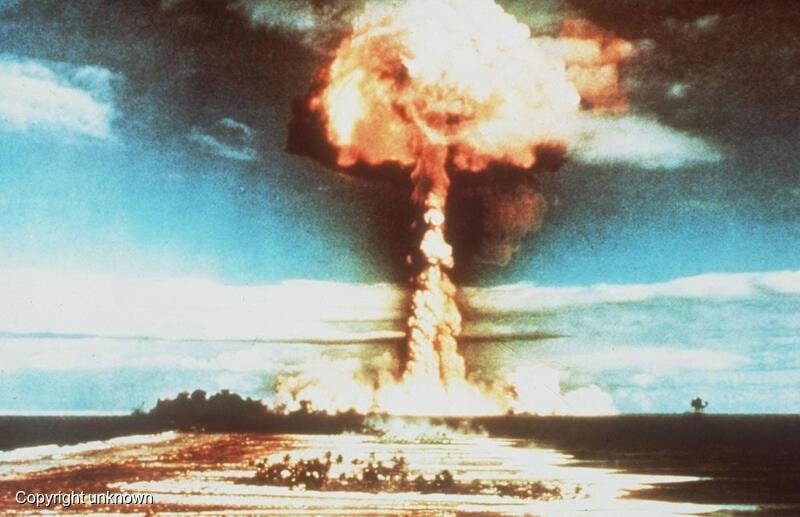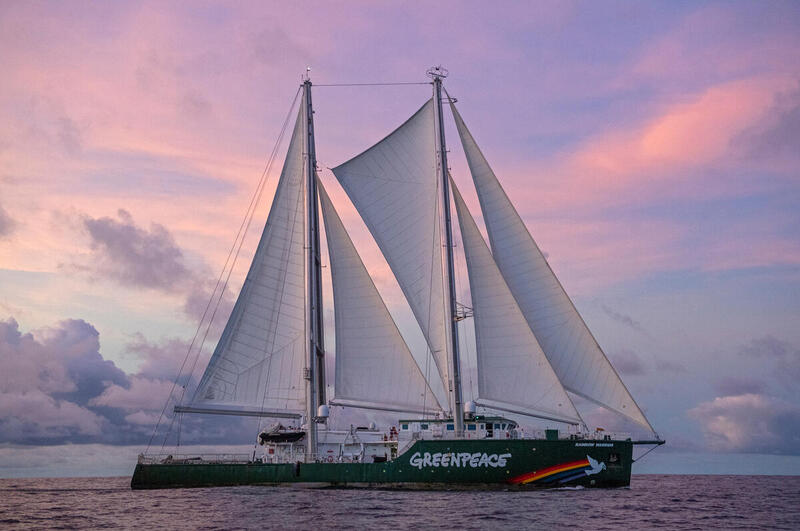Greenpeace Aotearoa has launched a new online educational resource describing the history of Greenpeace in Aotearoa, the South Pacific, and Antarctica covering the period 1971 to 2020.
From the first campaigns against French nuclear testing and whaling, and protection of Antarctic and the Southern Ocean, through to recent campaigns to keep NZ GE Free and end offshore oil and gas exploration, through to current campaigns on regenerative agriculture, overfishing and plastic pollution, the website covers decades of important environmental campaigns.
Greenpeace Aotearoa Executive Director Russel Norman says that through the decades, Greenpeace has been one of the most effective environmental campaigning organisations in history and this record of its work forms an important part of New Zealand’s own history.
“From the early days of our successful campaign in the Pacific to stop French nuclear testing – that was so effective that it led to the French government bombing the Rainbow Warrior in the Waitemata Harbour – through to the more recent decade long campaign with iwi hapū and countless others to end offshore oil and gas exploration, Greenpeace Aotearoa has played a vital role in New Zealand and the South Pacific.
“This is the first time that all of this material has been collected together and in this easily searched online platform. It should be a valuable resource for young people interested in the history of Greenpeace and environmental campaigning this century, and fit well with the new New Zealand history curriculum,” says Norman.
The project coincides with the 50th anniversary of Greenpeace itself with the first Greenpeace protest voyage setting off to Amchitka on 15th September 1971.
The period of Greenpeace’s history in New Zealand from 1971-1990 is covered in the book Making Waves: The Greenpeace New Zealand Story, by Michael Szabo. This has also been posted on the website as a freely downloadable PDF.
For the period 1990-2020, the Making Waves II website presents new material based on interviews by Making Waves author Michael Szabo with dozens of Greenpeace leaders, campaigners, activists, lawyers, mariners and scientists; campaign materials from Greenpeace’s archives; archival photographs; members’ magazines and reports; video footage, and historical news media coverage.
The project, funded by the Greenpeace Educational Trust, is intended as a resource for educators and students teaching and studying Aotearoa’s history during the period 1971-2020, “how societies work and how people can participate in their communities as informed, critical, active, and responsible citizens”, the history of the peace and environment movements, and the bombing of Greenpeace’s flagship Rainbow Warrior on 10 July 1985.
NZ history will be taught in all schools and kura from 2022. In 2019 the Government identified the “histories” that it intends to make a compulsory part of the school curriculum in 2022, including: “the country’s role in the Pacific, Aotearoa New Zealand in the late 20th century, and the evolution of a national identity with cultural plurality.”
The Greenpeace Aotearoa history project is relevant to the following:
How societies work – the role of Greenpeace as a civil society ‘environmental watchdog’, Greenpeace’s collaborative work with local communities, the peace movement, the environment movement, its collaborative work with mana whenua and Māori environmental activists, with communities and environmental activists in the South Pacific, and with other Greenpeace national offices and Greenpeace International
The evolution of a national identity – Rainbow Warrior bombing, NZ Nuclear-Free law, French nuclear testing in the South Pacific, nuclear disarmament, whaling in the Southern Ocean, Antarctic protection, toxic pollution in clean green NZ, driftnet fishing, GE Free NZ, oil-free seas.
The country’s role in the Pacific – The Rainbow Warrior bombing, French nuclear testing in the South Pacific, nuclear shipments through the South Pacific, Asia-Pacific rainforest protection, regional waste trade, ocean waste dumping and waste incineration at sea.
Aotearoa New Zealand in the late 20th century – history of New Zealand’s nuclear-free policy, opposition to French nuclear testing, Antarctic policy, climate change policy, oceans and fisheries policy, pollution policy, GE technology and policy, resource management law (RMA), oil exploration policy, and farming policy.

Donate to Greenpeace today. We take no money from corporations or governments. Our independence and ability to speak and act freely is our greatest strength. To maintain that freedome, we rely on the generosity of people like you to keep us in action.
Take ActionThis article is a guest post and doesn’t necessarily represent the views of Greenpeace.




